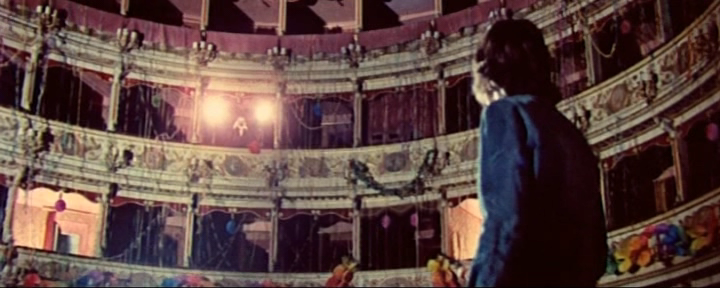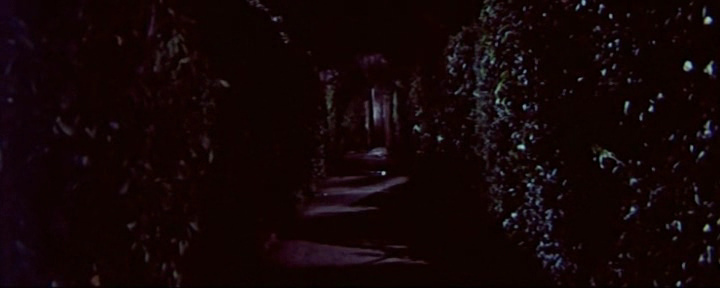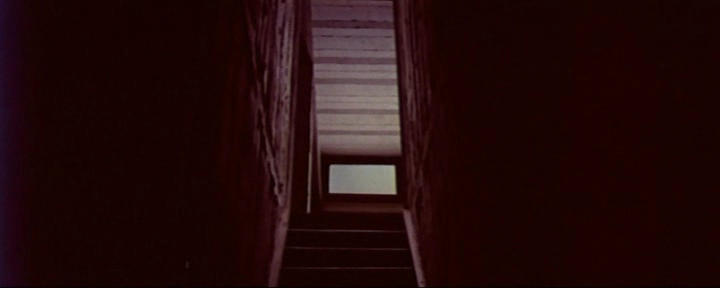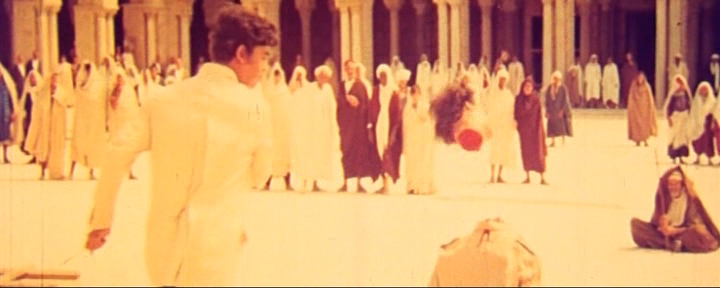Four Flies On Grey Velvet, Dario Argento and the Psychology of Place
Written by Joe D on December 30th, 2007Watching this Argento masterpiece I suddenly became aware of a phenomenon, it was something I’d thought about in other films but here in 4 mosche di velluto grigio it was so clearly exercised it jumps out and hits you over the head just like the killer in this movie. I’m talking about the use of perceived space or sense of place, private, personal space and public space.

Place Of Recurring Nightmare
Isn’t it more horrible when an atrocity happens in a public place and no one can do anything about it? Especially for the victim, it creates a sense of false hope, ” Look over here, someone’s trying to kill me! Can’t you see!” The dream our protagonist has says it all, a public execution in a square in Saudi Arabia. A guy is kneeling, the executioner jabs him in the neck with a stiletto, he jerks his head up and the killer chops his head off with a sword. This takes place in a large courtyard or plaza, a very public place. In a way this is the quintessential image of horror, of nightmare. A person being killed in cold blood out in the open for all the world to see and no one’s doing anything about it. They sit and watch complacently.( The image of the execution reminds me of a scene in Alain Resnais Last Year At Marienbad, another film with an interesting use of space).
Marienbad Psychological Space
Taking his cue from this nightmare image Argento then stages some of the murders in a way that takes advantage of our perceived sense of place. The set up for the whole film is a man intruding on our hero’s personal space. Roberto,(Michael Brandon) a rock drummer sees a guy always looking at him wherever he goes.

Roberto, he looks more like a guitar player than a drummer to me
He gets fed up and chases the guy into a theater or opera house. It’s empty, a public place turned into the setting for a nightmare.

Roberto accidentally kills his stalker and is photographed in the act by someone wearing a clown mask.





Soon he is being threatened by the mysterious photographer. Later a woman calls the killer and demands blackmail, I have to comment on the genius sequence that follows her voice over the phone lines, underground, through a switching station to the killer’s apartment,super cool,




Following the voice over the wires
the blackmailer arranges to meet the killer in a park. There are lots of children playing, lovers in the bushes, music is piped in. A very safe public place. But as it gets later and later and the killer doesn’t show, the woman daydreams, smoking a cigarette. Suddenly she notices the music has stopped, the children are gone, the lovers have left. Argento accomplishes this in a beautiful way, jump cutting from a wide shot of the children to the same wide shot without them, ditto the lovers in the bushes. Brilliant!


The Next They’re Not
Then our hapless blackmailer hears the scrape of the gate as the watchman locks it, the sun is setting, she’s now trapped in a nightmarish maze of bushes and walls with a psychotic killer hunting her.

The Innocent Park has Nightmarishly Transformed into a Labyrinth of Death
Argento has captured the logic of the nightmare perfectly, but for me it is his understanding and manipulation of “place” that makes it so powerful.

Famous Argento Use of Color
Later in the film a gay private detective tracks the killer on the subway, a crowded public place, the killer gets off and the private dick follows.



Subway to Hades
Once again the public space transforms to a nightmarish claustrophobic death cube ( a public restroom). Another killing is a classic, a young girl hears the killer enter her apartment, she sneaks out of her bedroom and into a hallway, there she stands at the foot of a stairway. The stairway is psychologically a scary place, I believe it comes from our childhood when it was physically dangerous to us, also you can’t see what’s at the top of the stairs, Hitchcock took advantage of this phenomenon in Psycho.

Stairway to Heaven, I mean Doom
Then the young girl goes up the steps and hides in a wardrobe, like a closet. Another nightmare place from childhood, the child hiding from the punishing or abusing parent. This was also used very effectively by David Lynch in Blue Velvet.

Childhood Trauma
Ther is another cool sequence where the police use the dead girl’s retina and a laser beam to record the last image seen by the victim, this idea has been used in other films but I think this was the first time it appears,


this movie is extremely rich in creativity and for me Four Flies On Grey Velvet is the best use of the manipulation of our perception of place in Cinema. Bravo Dario Argento!

Hats Off To Argento!



